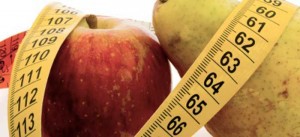Managing your weight means more than watching what you eat. There are three main components of weight management: (1) a balanced nutrition plan, (2) regular exercise, and (3) healthy eating habits. Excess weight is stored as fat. In order to burn stored fat (lose weight), you must first burn the calories you eat each day. To maintain your weight, the number of calories you eat should equal the number of calories you burn. The following table is a guideline of recommended weights. The higher weights in these ranges generally apply to men because men tend to have more muscle and bone than women.
Medical Terms About Weight
• underweight – 10% to 20% below recommended weight
• normal weight – within 10% of recommended weight
• overweight – 10% to 20% above recommended weight
• obese – 20% or more above recommended weight
Body Mass Index (BMI)
Info on body mass index.
BMI is not standard for everyone. BMI should not be applied to children, adolescents who are still growing, adults over 65, pregnant of lactating women, or highly muscular individuals.
Ways to achieve a desirable weight
The best way to achieve a desirable weight is with moderation: moderate exercise,
moderate calorie intake, and a moderate amount of common sense. Your attitude and behavior also affect the way you look and feel. To be successful, you must be in control of your weight management program. The following habits have been found effective for managing weight:
- Set reasonable goals for losing weight. Lose weight slowly. A slow and steady effort will keep the pounds away. Drastic weight loss usually does not last. Losing 1 or 2 pounds a week is a reasonable and sensible goal. Set new weight goals as you go along. It is also wise to talk with a dietician or your doctor before making big changes in your eating habits or starting an exercise program.
- Follow a balanced, low-fat eating plan. Limiting fat intake while eating a variety of foods will ensure good nutrition and provide needed energy.
- Change bad eating habits. Begin by writing down everything you eat for a week. Make a note of significant patterns. Find out which foods are nutritious and which ones are not. Make a promise to yourself to eat more nutritious foods.
- Exercise. Find a physical activity that you enjoy and can do regularly, such as walking or gardening. Include a variety of activities in your fitness plan. Exercise with a friend. Make exercise fun, social, and regular.
- Track your progress. Measure your thighs, hips, and waist when you begin your lifestyle change and about once a month thereafter. Be patient. Don’t expect major changes overnight.
